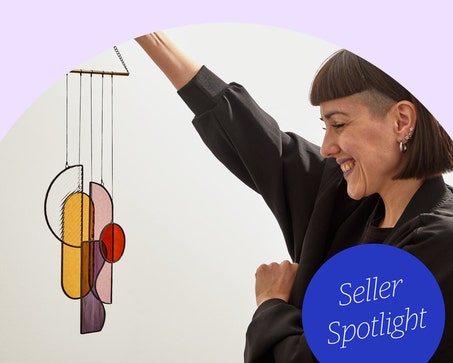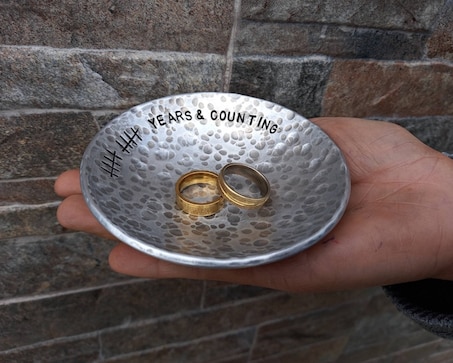This Texas-based designer combines modern flourishes with masterful old-fashioned hand-sewing to create her romantic line of wedding day essentials.
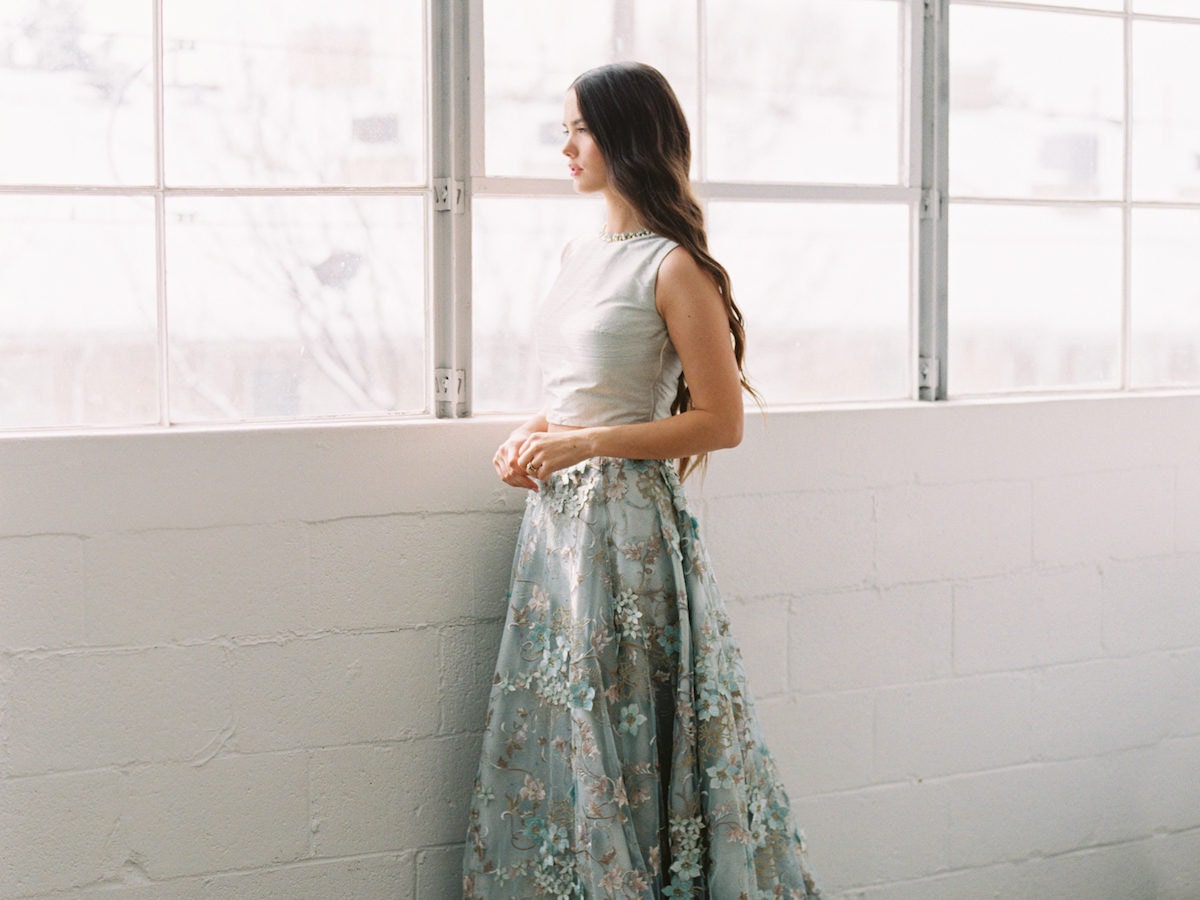
In our weekly Featured Shop series, we shine a light on a standout shop from Etsy's talented seller community, offering readers a behind-the-scenes look at their process and story.
Traditional or modern. Solemn or playful. Romantic and soft or crisp and minimalist. For generations, women have chosen a single aesthetic for their wedding ensembles, whether or not that look reflected their actual day-to-day style. But in Texas-based bridal designer Smitha Menon's world, there's no need for any of us to hem ourselves in. “Brides today are experimenting more,” says Smitha, who's carved out a unique niche with her line of veils, accessories, and mix-and-match wedding separates. “I have classic brides who are looking for that wow factor, and they’re going for dramatically embellished cathedral veils. I have modern brides who choose a very simple gown, then add a Juliet cap veil to recreate some vintage ‘50s magic.”
Explore the Smitha Menon Bridal collection
A graduate from the National Institute of Fashion Technology in New Delhi, Smitha opened Smitha Menon Bridal in 2011 and began exploring ways to help her customers approach their wedding day apparel with a little less structure—and a lot more oomph. Using old-fashioned beadwork and precision hand-stitching, Smitha built a beautiful, modern collection in a completely reimagined palette of golds, pinks, and blues. The key to finding the right combination for you? “Use your imagination, work with your designer, and make it happen,” Smitha says. “Make it special, and make it your own.”
Read on to learn how Smitha makes her line ultra customizable, and shop the Smitha Menon Bridal collection.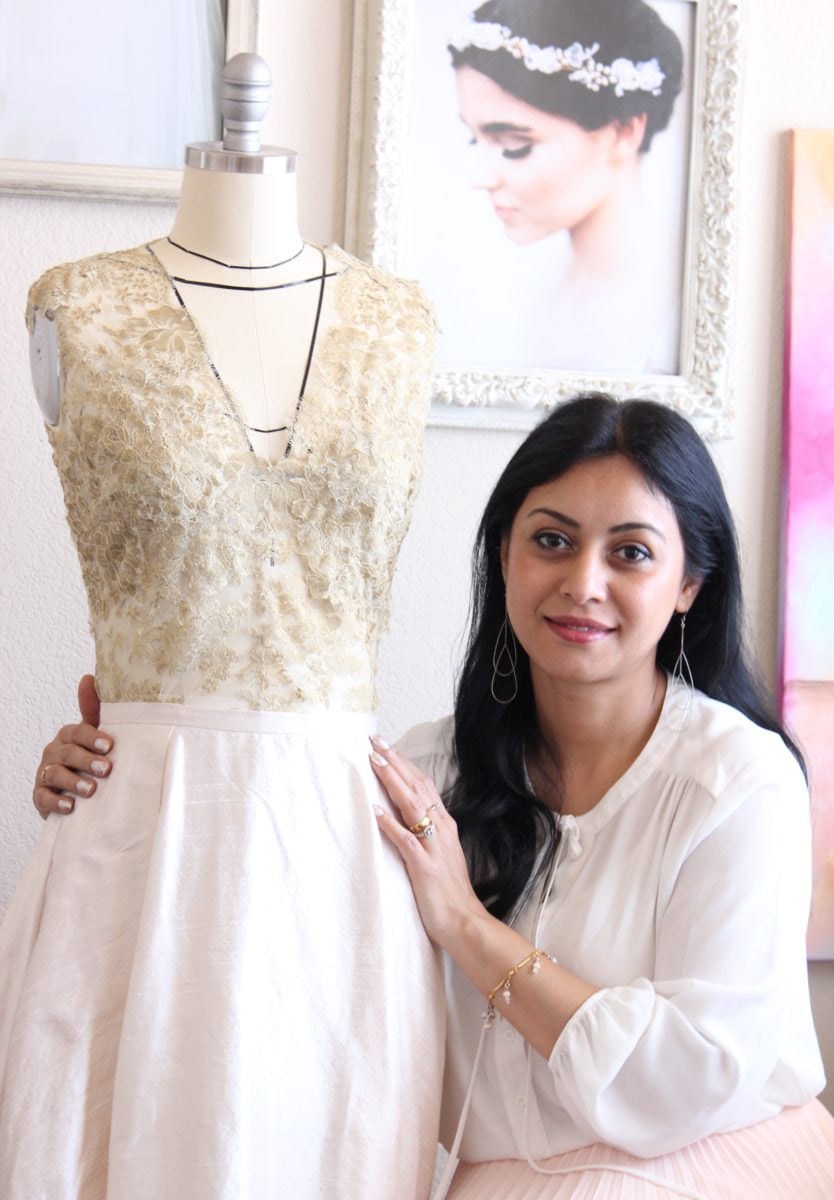
Can you tell us about your creative roots?
I was born in a small, laid-back village in India, where there's no fashion whatsoever. All you have is the pictures you see in magazines and your imagination. I used to point to an outfit in a magazine and say, “This is what I’d like,” and my mom would go to the local store, get some fabrics that looked similar, and sew dresses for me. And I was one of the trendiest girls in my neighborhood! I was so happy with those outfits.
Was it your mom who first taught you to sew?
I asked her to, but she never taught me because she thought her process was wrong, and she didn't want me to learn the wrong way. But I think maybe she should have. Because really, the tailors back in India are the most talented, creative people I've ever seen. They can just look at you without taking any measurements and make your garment perfect.
I want to be able to do that, to understand the body just by looking at it, but when you go into the fashion world and learn the technical way, like I did, it's hard to go back to that casual way of just marking up a piece of fabric and making it fit. And my mom used to do it with such ease. I'm hoping that with more experience working with more body types I can get there.
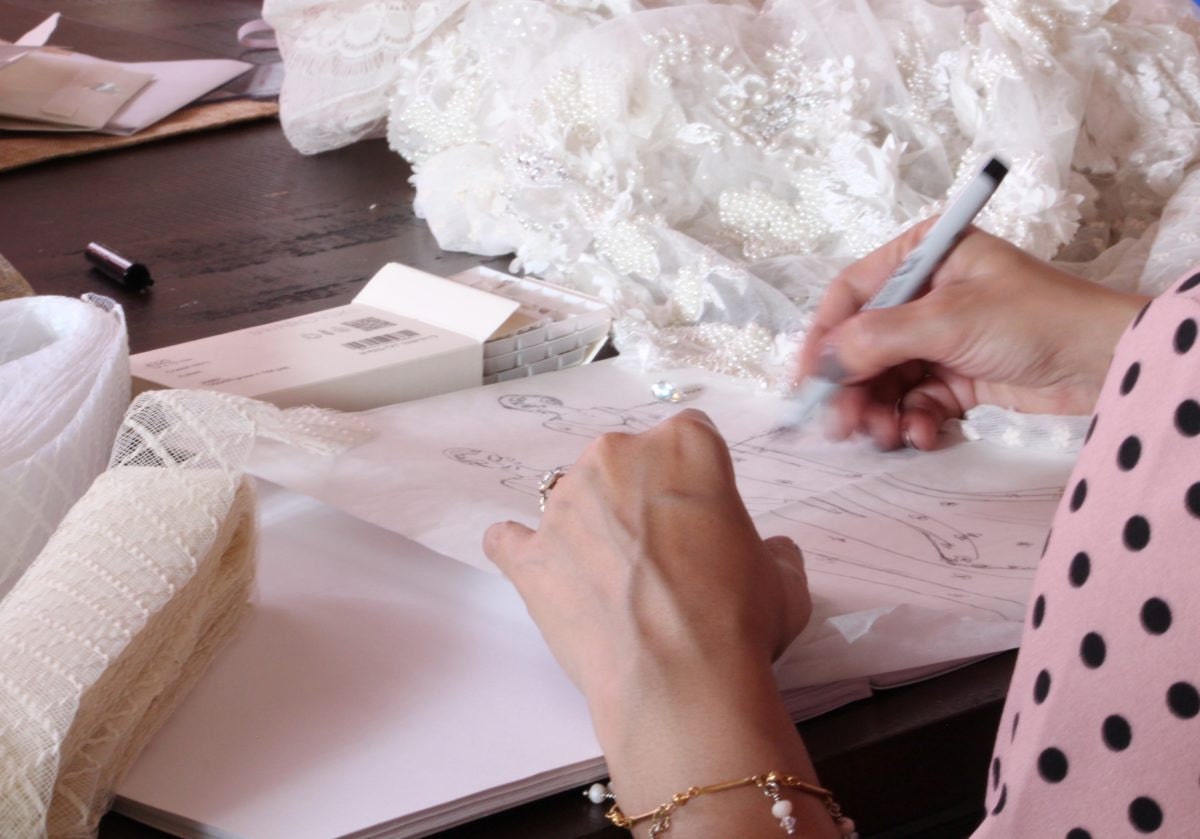
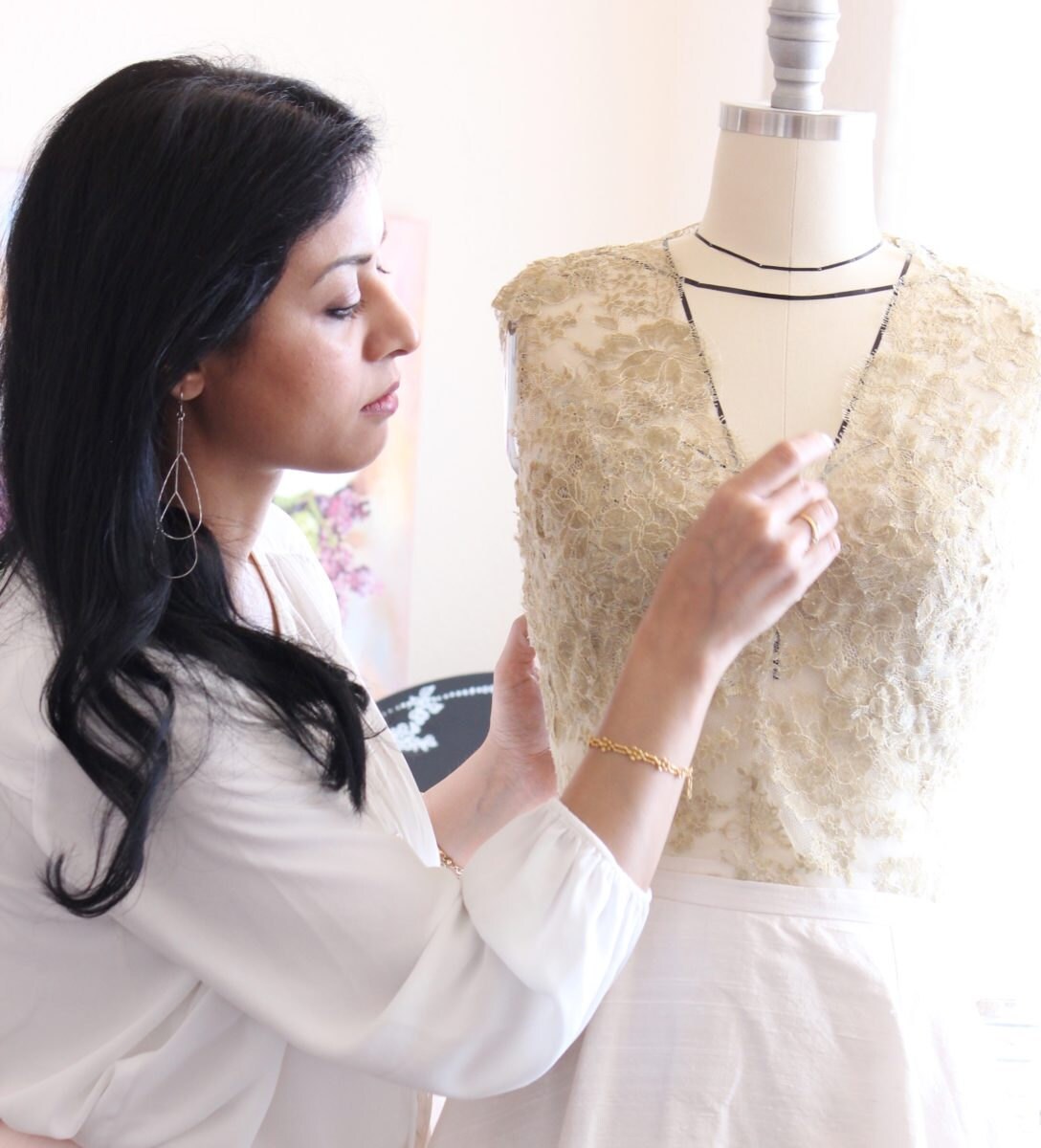
What are some of the qualities that distinguish your bridal line?
Most gowns currently on the market are in the ivory range, with a little bit of champagne coming in too. When I realized that a hint of color was making its way into bridal wear, I decided I wanted to create a unique gold lace top, a blush pink skirt, and a blue wedding skirt. I designed them as separates so you can not only wear them for your wedding, you can mix and match and use them later in life as well. I'm also very particular about the quality of my fabrics and materials. It’s such a special day, and I feel like the bride should be wearing something that rises to the occasion. I want it to be a cherished piece—an heirloom that she can pass down through generations, and tell the story of how it was made.
What are some of your considerations when designing for a bride?
I appreciate the understructures of traditional bridal gowns, but I don't want my bride to be uncomfortable on her wedding day. I would rather have a gown that's less structured—just free, simple. Gown designs overall I think are trending that way. Brides are more comfortable in their own bodies, and they’re okay with wearing a dress without much support, so there’s been a movement away from using boning or corseting inside the dress. That’s my focus: exploring the freedom of a simpler silhouette, but with lots of embellishments.
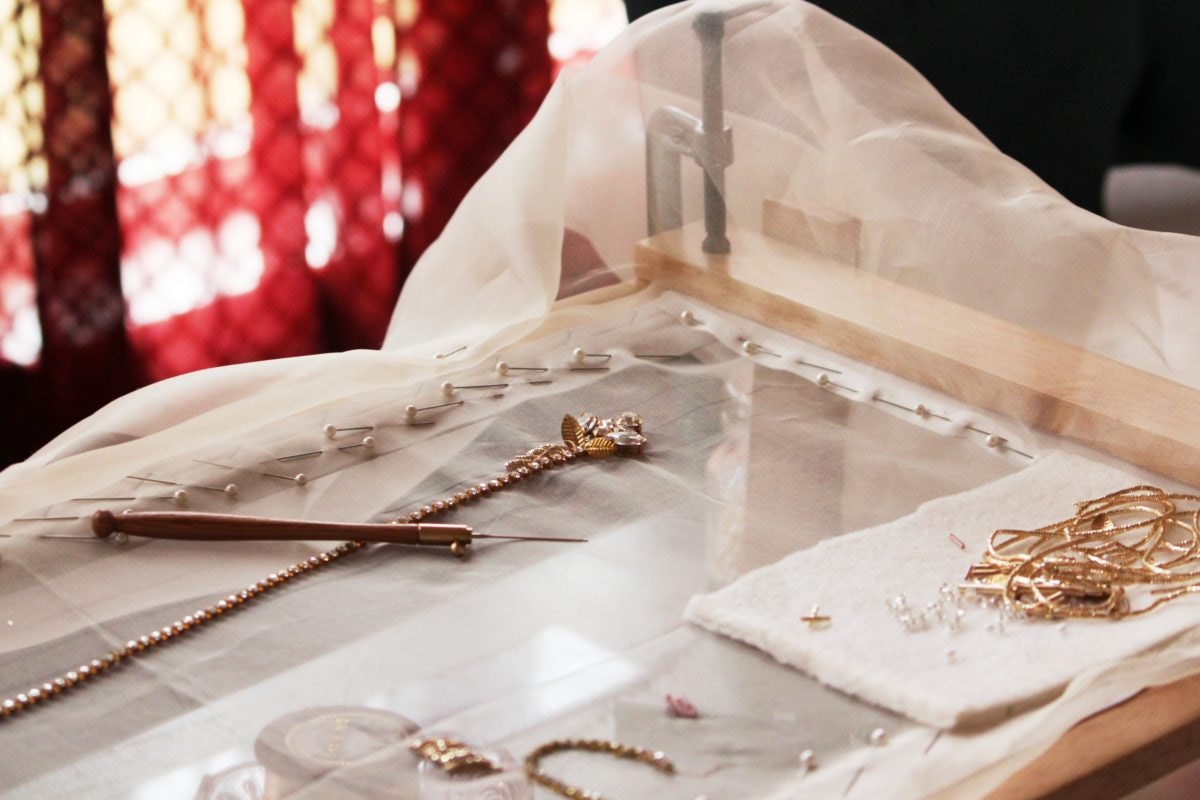

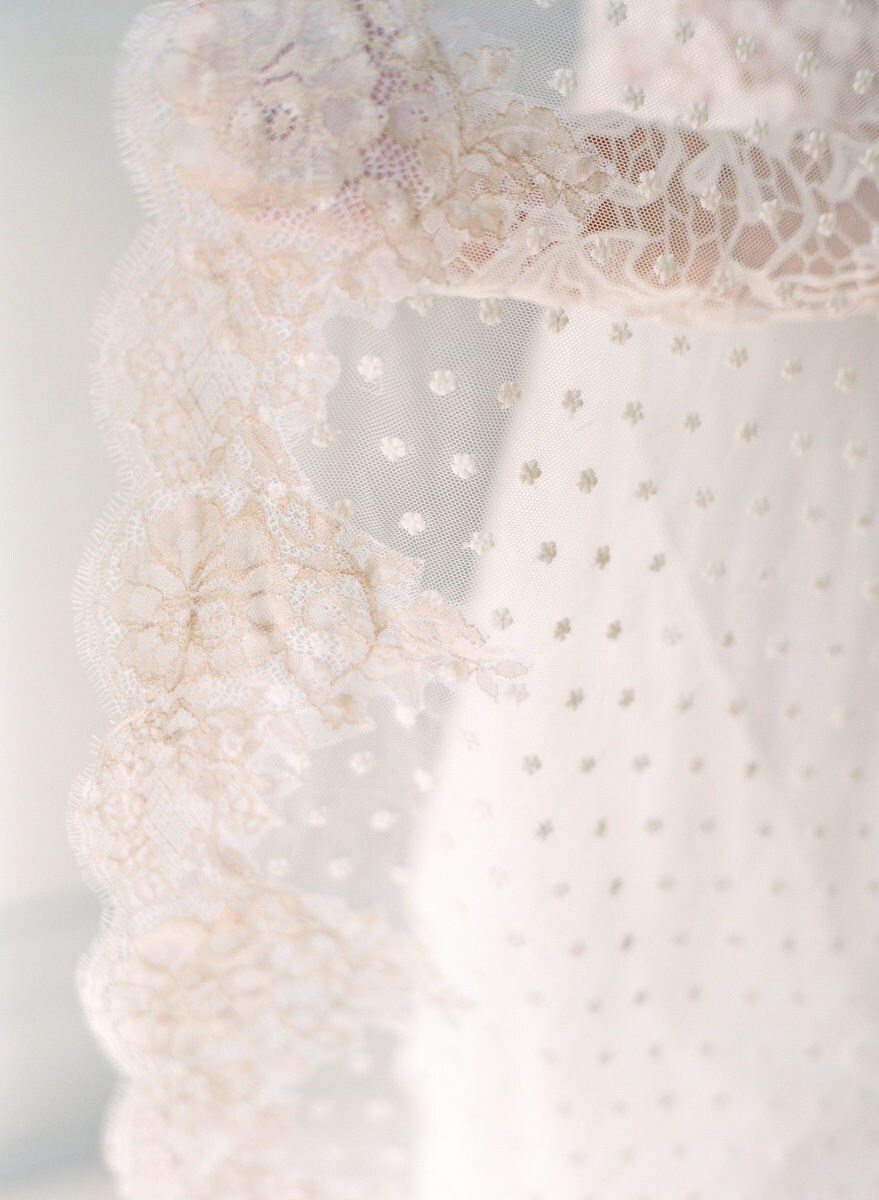
Where do you find inspiration for your work?
Coming from a land where beading, embroidery, embellishment, and gold work are all so valued, I guess that’s been my inspiration my entire life. I've always seen these things all around me—the craftsmen sitting at their tambour tables, hand-sewing each and every bead, never tiring of the work. And the beading and embroidery they create are so wonderful. I want to incorporate that into my pieces. I've been trying to connect with some artisans back in India to get panels that I can use in my designs. I have some samples that I had made combining French laces with that intricate hand beading from India, and I don’t even want to use them because they’re just so precious.
Aside from fabrics, how do you select your materials?
All the crystals and pearls that I use on my veil embellishments are Swarovski, and I always use Czech beads, which are precisely cut in a specific shape. When you use regular beads from the market, each one is a different size, so when you go to do a tambour or embroidery with it, the calculations or the spacing varies. So it makes a lot of difference investing in quality materials.


What are some of the ways brides can customize your designs?
The blue gown has the outer layers—that luxurious, beaded lace. And then because it's see-through, the inside is 100 percent silk, with a matching color. So I can make the shade of that a little darker or lighter, or put ivory inside, and it will completely transform the whole look of it.
Sometimes a lace is only available in white and I’ll hand-dye it to the bride’s liking. I have brides send me swatches of colors in the shade they want, and I match the color using a natural dye made from tea. I’ll send them three or four options in slightly varying shades, and they match it with their gown and let me know which one works.
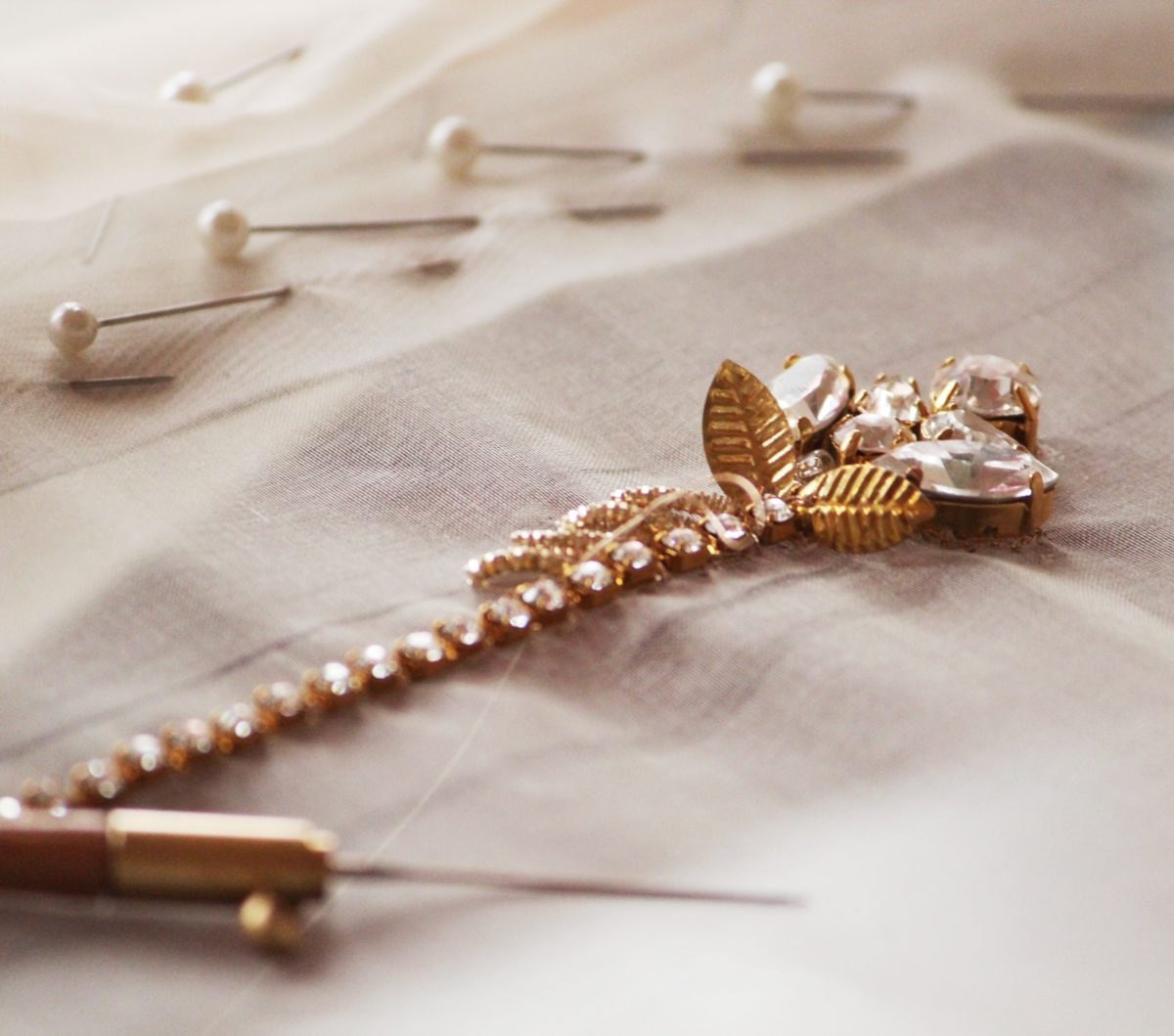
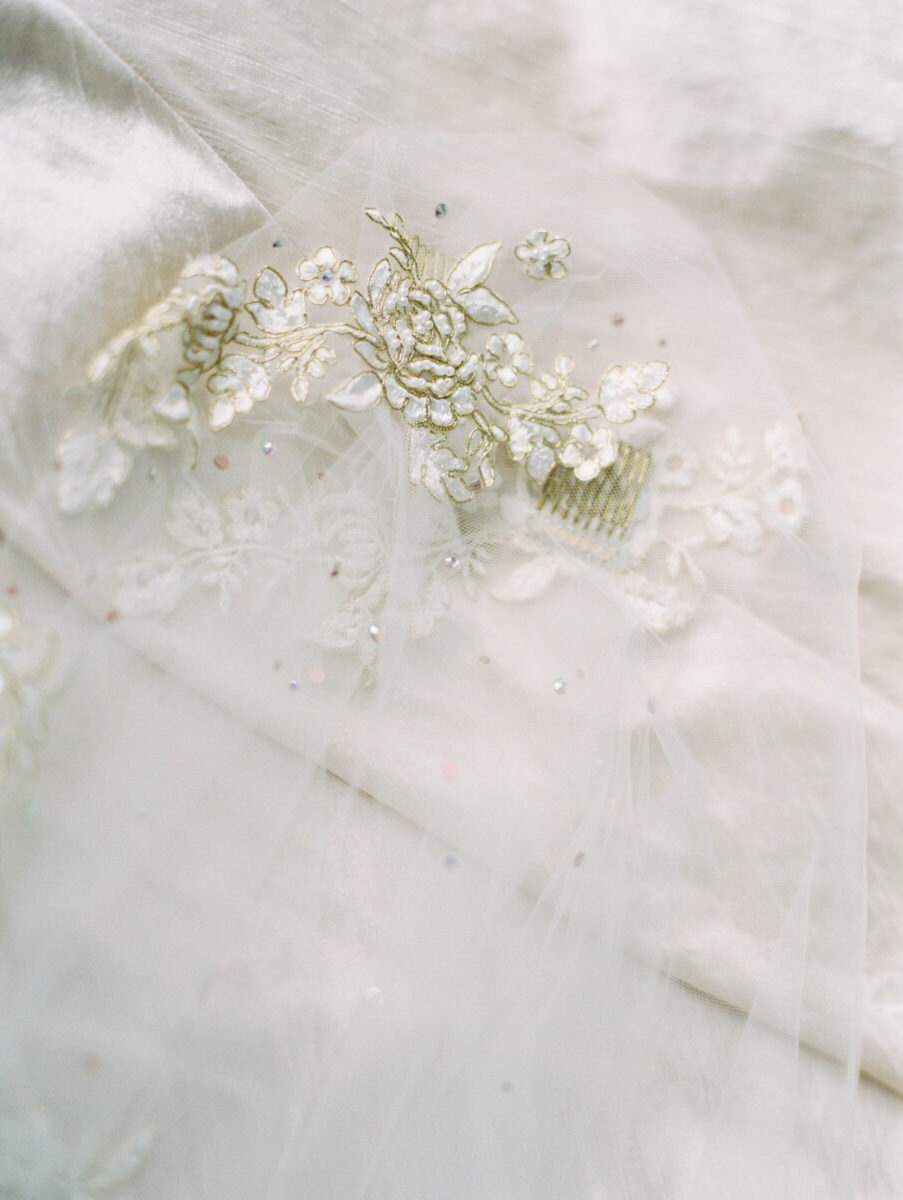
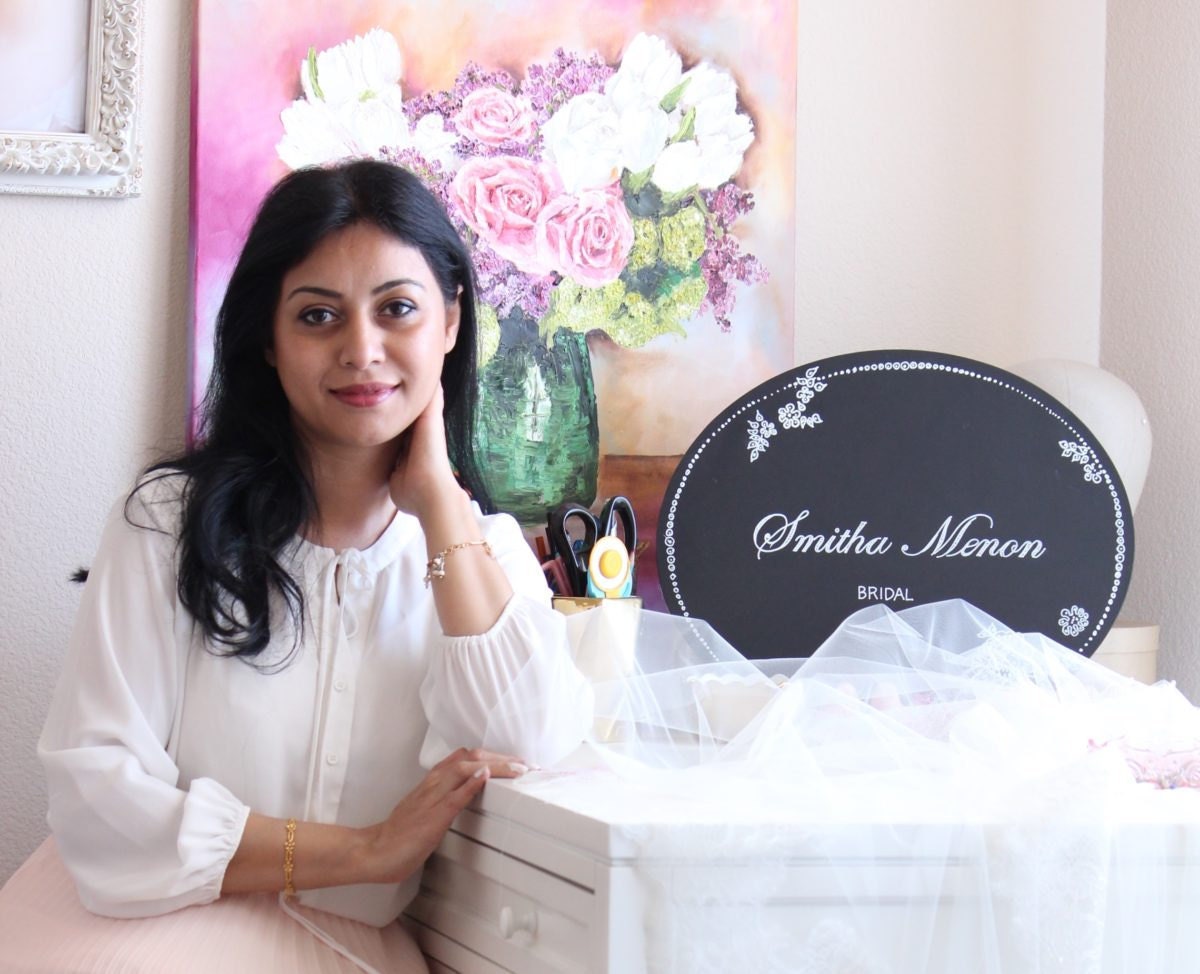
What’s your favorite part of your job?
That it's all 100 percent hands-on. When I send my products to a bride, I know the whole process. I know each and every order that I have in hand. I know my bride's name by heart. And I don't want to ever get away from that. I want to continue that very personal, made-with-love kind of thing.
Also, when brides take the time to write really elaborate feedback—my gosh, it’s superb. I send them a message saying that it just made my day, my entire month, maybe. I think every day becomes special when you get good feedback for the work you've done.
Follow Smitha Menon Bridal on Instagram and Facebook.
Model photography by Connie Balluff. Studio photography courtesy of Smitha Menon Bridal.
 >
> >
> >
> >
> >
>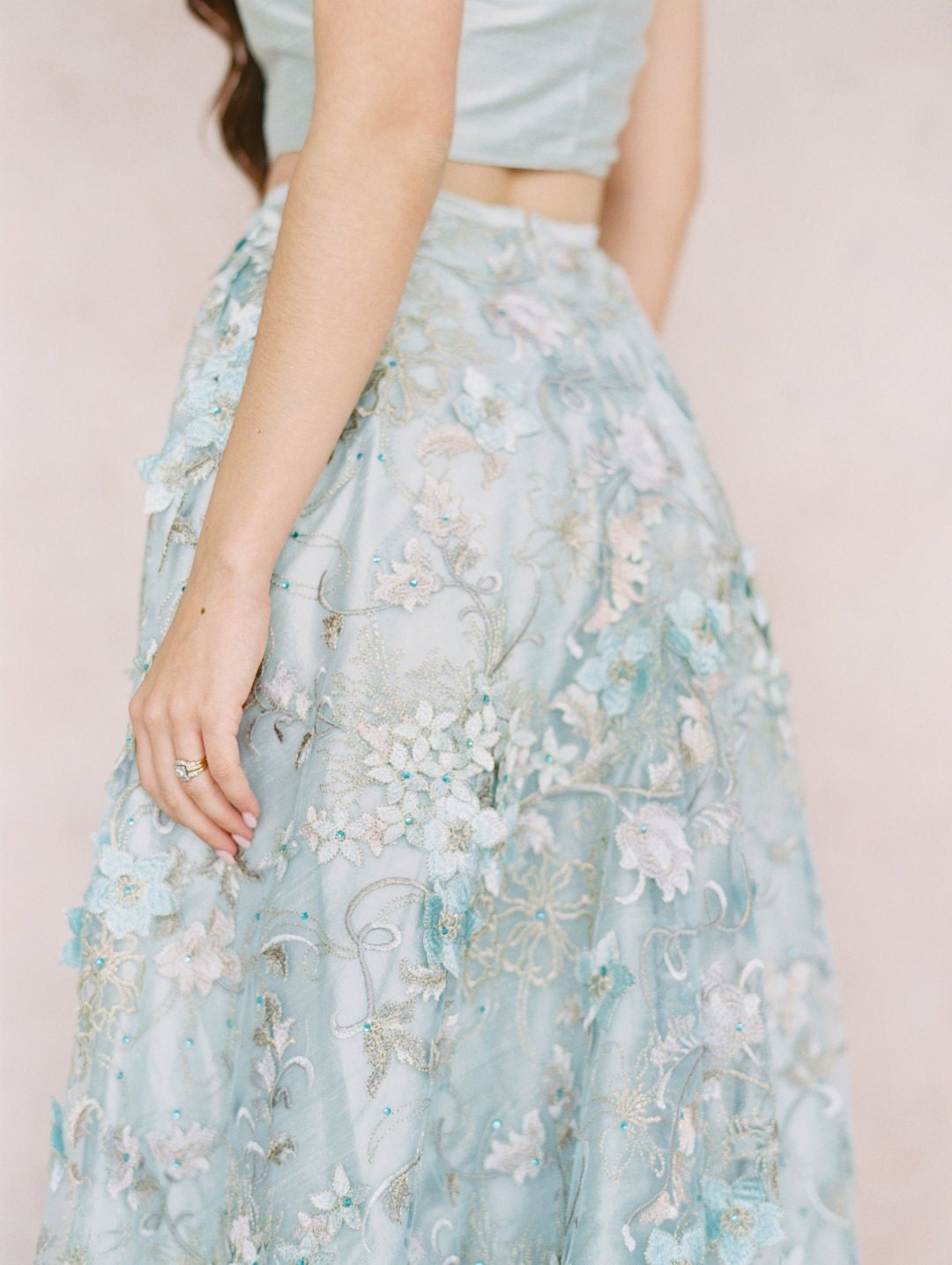 >
>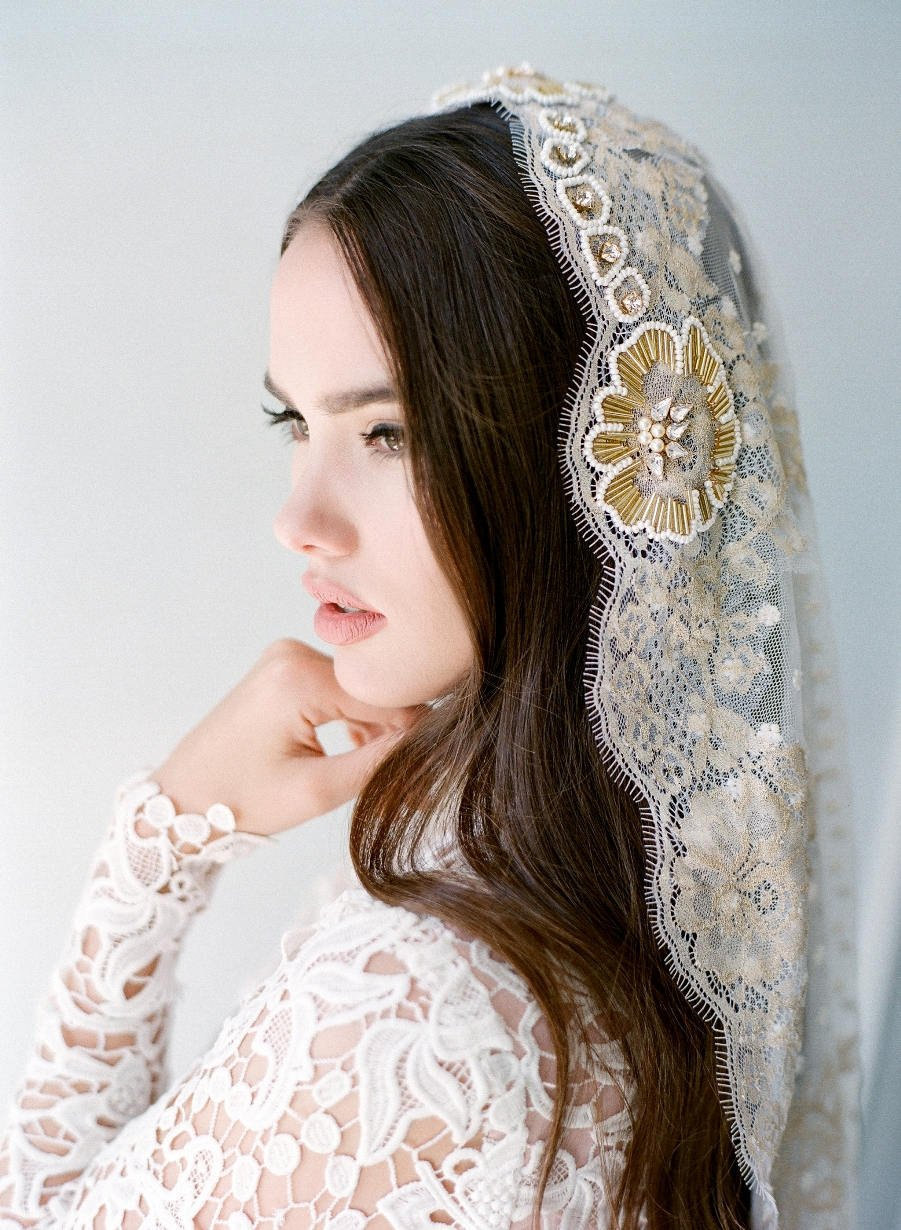 >
> >
>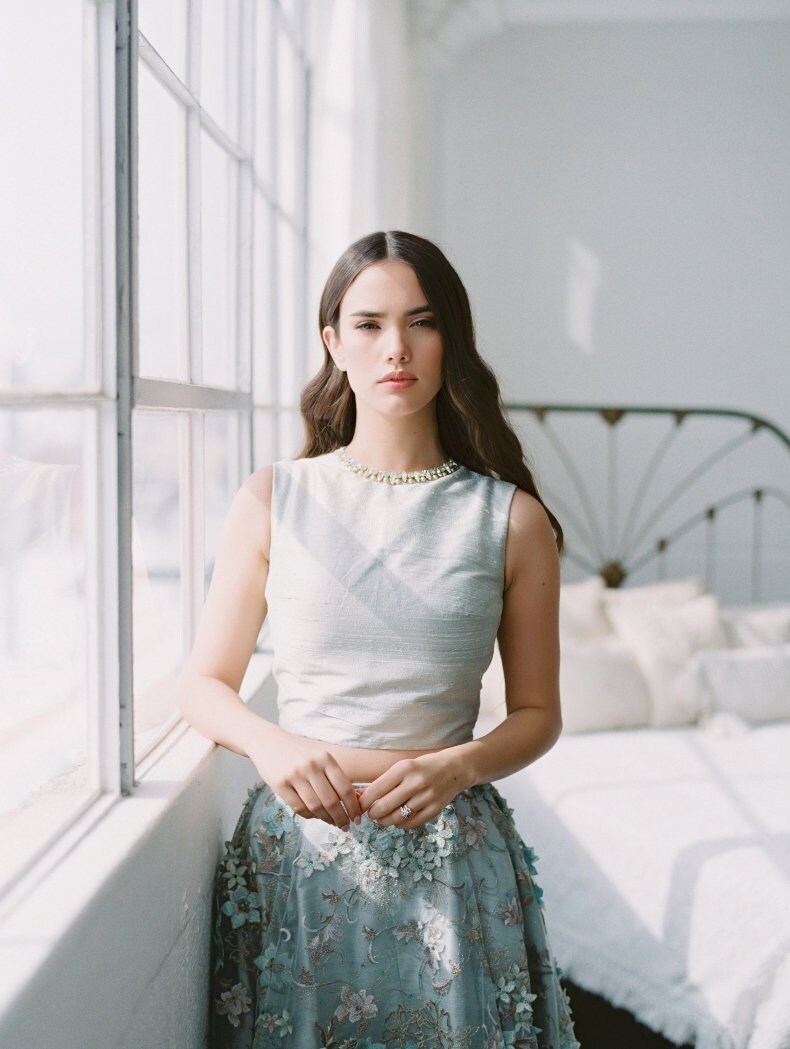 >
> >
> >
>
